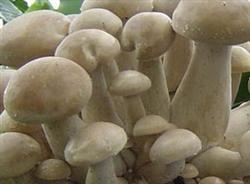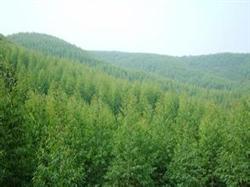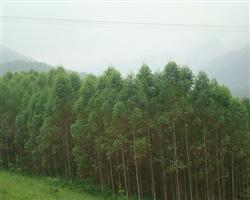Early and delayed High-yield cultivation techniques of volvariella volvacea

Straw mushroom meat fat and tender, delicious, deeply loved by consumers. But it is a high-temperature edible fungus, the market supply period is short. Through nearly two years of exploration, the scientific and technological personnel in Shuyang County, Jiangsu Province have extended the production period of volvariella volvacea by half a year, and achieved obvious economic and social benefits. Time arrangement and indoor cultivation of production mode can be combined with indoor and outdoor cultivation. Indoor cultivation can be cultivated in mushroom rooms and other spare rooms, and outdoor cultivation can be cultivated in small arched sheds and plastic greenhouses. No matter which way is used, it is necessary to meet the requirements of sunshade, windproof, heat preservation and humidification. The time limit of extended cultivation is basically close to but still lower than the normal temperature of volvariella volvacea. According to the climatic characteristics of this area, the cultivation is carried out with no or less heating, generally from April 20 to June 20 as the first cycle. It is appropriate to postpone to the middle of September to October. The culture materials and the culture materials for straw mushroom cultivation are mainly waste cotton, cottonseed hull and corncob, and the yield is higher. Indoor cultivation is first covered with 10 cm thick fresh straw on the bed frame, and then covered with waste cotton or cottonseed husk for cultivation. To cultivate straw mushroom with waste cotton, the waste cotton should be pre-wet and soaked thoroughly one day or the same day before sowing, and mixed with 5% lime for 24 hours for 48 hours; the new material should be poured with pH8.5 lime water before entering the bed to make the culture material absorb enough water; rice straw should be pre-wet with lime water for 1-2 days before entering the bed to absorb enough water. When cultivated indoors, the moisture content of the culture material is 5-6 dripping water, and the water content is about 70%. Key points of cultivation and management techniques indoor cultivation time should be early, generally at the beginning of May, during which the temperature is low and changeable, indoor bed planting should be properly increased. The indoor cultivation bed is suitable for 3-4 layers. The bed is first covered with 10 cm thick rice straw pre-wet with lime water, and then covered with waste cotton or cottonseed shell to make a wavy shape, about 10 cm thick, unsowing bacteria, sowing 4 kg of seeds every 50 kg, covering about 1 cm of fine soil after sowing, first covering the film when the bacteria are growing, and removing the film when the hyphae germinate to facilitate the hyphae to protrude. Bud after 7 days of sowing, pay attention to moisturizing and prevent temperature difference at this time, about 12 days can be harvested. If the sowing temperature is low, the temperature can be properly heated to about 35 ℃, 30 ℃ ~ 32 ℃ after uncovering the film, and 28 ℃ ~ 32 ℃ in the stage of mushroom emergence. Avoid excessive temperature difference and keep high humidity in the mushroom room. Greenhouse cultivation is a stable and high yield cultivation method with long cultivation time and convenient operation, and the way of entering bed and sowing is similar to that of conventional small ring greenhouse. In early May, the temperature is relatively low, the general vegetable greenhouse, set a small ring shed, only a small ring shed for sunshade, sunlight can be directly into the greenhouse, the small environment temperature is higher, but also conducive to night heat preservation, the temperature is also easy to control, but also can prevent Rain Water drenching. When the temperature rises to normal, the film on both sides of the greenhouse can be opened to facilitate ventilation and cooling, without affecting the temperature in the small ring shed and the normal growth of straw mushrooms, or add grass curtains to the greenhouse, remove the small ring shed sunshade grass curtains, and lift the film. When straw mushroom is cultivated in September, it is necessary to prevent the sudden low temperature in the mushroom period, the decrease of temperature at night, and the small ring shed should be covered with straw to keep warm. The early and delayed high-yield cultivation of volvariella volvacea was cultivated according to the conventional method when the temperature was stable above 30 ℃ in July. In short, the cultivation of volvariella volvacea should deal with the relationship between temperature and humidity, create an environment suitable for the growth of volvariella volvacea, sow seeds at room or greenhouse temperature (about 35 ℃), and fully develop the mycelium of material layer, so as to lay a good foundation for stable and high yield.
- Prev

Does planting eucalyptus damage the land?
1. Suitable environment Eucalyptus prefers warm climate, but is not resistant to hot and humid, and overheated climate grows poorly. Yunnan is mainly distributed in the area of 1200-2400 meters above sea level. It can only withstand a low temperature of about-7 ℃ for a short time. If it is menstruated at-5 ℃ for 2-3 days, it will produce varying degrees of freezing injury, light twigs.
- Next

Morphological characteristics of eucalyptus
Evergreen plants have periodic shedding of old leaves within a year. Most species are tall trees, a few are small trees, and few are shrubby. The shape of the crown is steeple, multi-branch, weeping branch and so on. Leaves simple, entire, leathery, sometimes covered with a thin waxy layer. Leaves can be divided into young leaves, middle leaves and mature leaves.
Related
- Fuxing push coffee new agricultural production and marketing class: lack of small-scale processing plants
- Jujube rice field leisure farm deep ploughing Yilan for five years to create a space for organic food and play
- Nongyu Farm-A trial of organic papaya for brave women with advanced technology
- Four points for attention in the prevention and control of diseases and insect pests of edible fungi
- How to add nutrient solution to Edible Fungi
- Is there any good way to control edible fungus mites?
- Open Inoculation Technology of Edible Fungi
- Is there any clever way to use fertilizer for edible fungus in winter?
- What agents are used to kill the pathogens of edible fungi in the mushroom shed?
- Rapid drying of Edible Fungi

